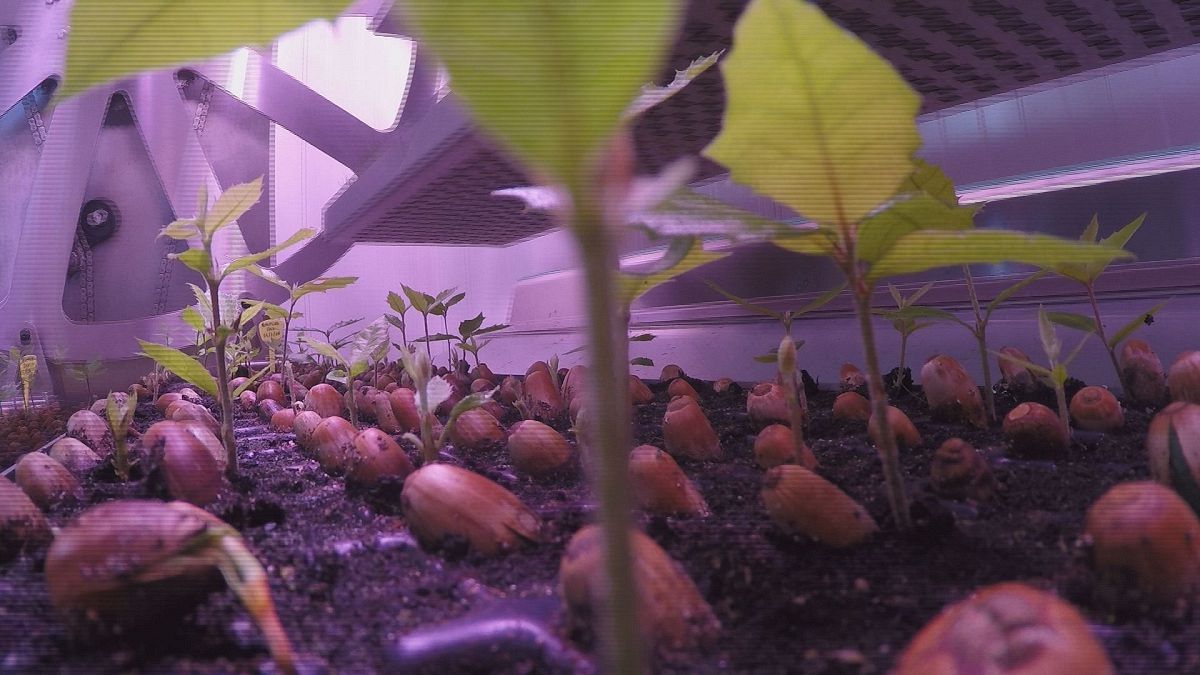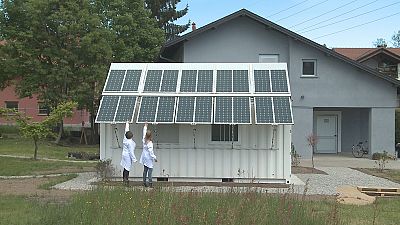Can a small greenhouse help to guarantee the sustainability of European forests? To find out, the Futuris team travelled to northern Italy. What
Can a small greenhouse help to guarantee the sustainability of European forests? To find out, the Futuris team travelled to northern Italy.
What looks like an ordinary transportation container houses a sophisticated robotic greenhouse that, according to its developers, can help guarantee the sustainability of European forests.
At the nursery for trees visited by Futuris, hundreds of baby oaks, beeches and pines are carefully being taken care of.
A constant movement of trays guarantees an average environment equal for each forest species, almost impossible to be obtained with ordinary growth chambers, researchers say.
“We have very different environmental sensors, both inside the container and inside the growth chamber itself,” explained Rosaria Santamaria. “These sensors monitor temperature, humidity and carbon dioxide. With the computer software we can control the rotation speed inside the growth chamber, and move the robotic arm”.
Embedded cameras monitor health of trees
Optical sensors and a stereographic camera embedded on the robotic arm provide scientists with information used to assess the baby trees’ health and evolution.
“With the embedded cameras in the robotic arm we can monitor the trees’ growth,” added Santamaria. “Even during weekends, with my mobile phone, and thanks to all the sensors scattered around, I can monitor the whole situation, if the lights are for instance working properly.”
Day and night cycles by LED
Efficient LEDs reproduce day and night cycles that can be adapted depending on the forest species being grown.
“Before building the growth chamber we made preliminary studies to define the right [trees’] cultivation parameters: ideal temperature and humidity of course, but also how many day lights trees need and the intensity of this light,” Tatiana Marras, a biologist from Tuscia University told Futuris.
“We need these parameters so we can have baby trees that grow fast but that at the same time are robust and have the right root architecture, so that can be safely transplanted to the open ground,” Marras added.
Scientists say they developed the prototype to show plant species can be regenerated using less water, pesticides, fertilizers and energy.
And for that, many different guidelines on botany and plant science had to be considered, they say.
“It was crucial, for instance, to understand that an important growth parameter is the tree’s height,” said Donato Chiatante, Professor of Environmental & Applied Botany, University of Insubria. “This gives us information not only about the fact that the baby tree is healthily growing, but with that information we could also calculate the kinetics of that height, so we know important details about the speed of the trees’ growth.”
Prototype design
The prototype was designed to be portable. It is fed with 20 photovoltaic panels, so researchers say it can be easily transported even to isolated regions where specific tree species are needed for forest regeneration.
“Each plant has specific genomes. Spanish cork oaks, for instance, are somehow different from Italian or French cork oaks,” said Bartplomeo Schirone, Dendrologist, Tuscia University / Zephyr project coordinator. “With this prototype we can grow and transplant baby trees on each country, on each location, without risking any genetic pollution.”
Researchers say the first units could hit the market in around six years, with the primary customers eventually being forest nurseries, landscapers and urban planners.




